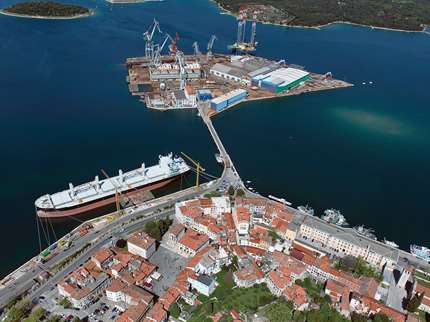Return
The Arsenal
Having become the main war-time harbour of the Austro-Hungarian Monarchy, the construction of the Arsenal commenced in 1848. Its iron structure proves the arrival of new tendencies in Pula.
During the Austro-Hungarian Monarchy in the mid 19th c., Pula became the Monarchy's main war-time harbour which led to the construction of the maritime arsenal of the Austro-Hungarian navy. Located on the south coast of the Pula Bay, it is surrounded by high hills and the Brijuni islands from the sea side. Its position, size and the protection from winds and waves made it one of the most suitable natural ports. The works commenced in 1848 by the erection of three warehouses. The arsenal cornerstone was laid in 1856 by Empress Elisabeth herself. At the same time, the Navy or the Military Hospital and the Franz Joseph Barracks were also erected. The arsenal was built and organized in the modern manner, consisting of various workshops such as the one for making sails and masts, metal machinery, the carpentry, the assembly one with cranes, and the ironworks. All the workshops and piers were operated by 52 steam boilers with 36 steam machines and a gas motor. As early as the mid 19th c., two covered overpasses on the island of Uljanik, a part of the Arsenal, were executed by the iron structure manufactured in the Witkowice ironworks, which proved the existence of the new architectural tendencies in Pula. The shipbuilding tradition in Pula has continued until the present day thanks to its Uljanik Shipyard.










